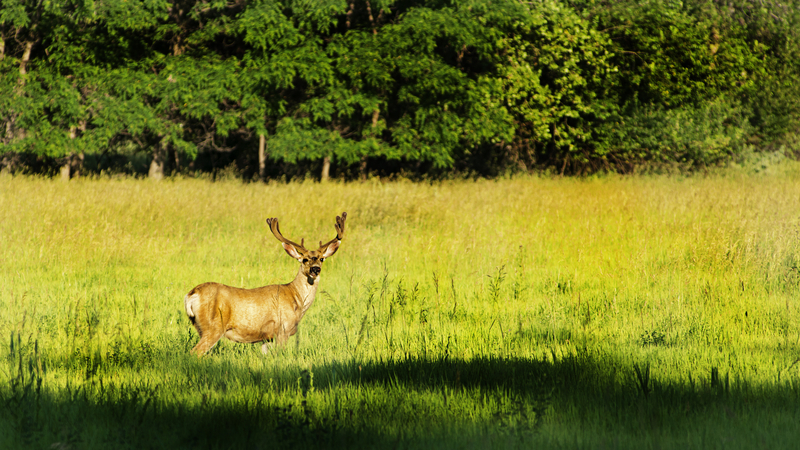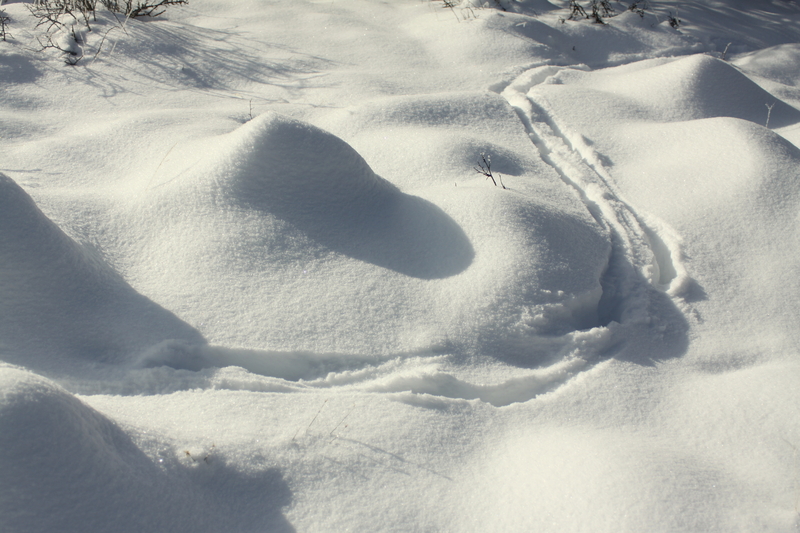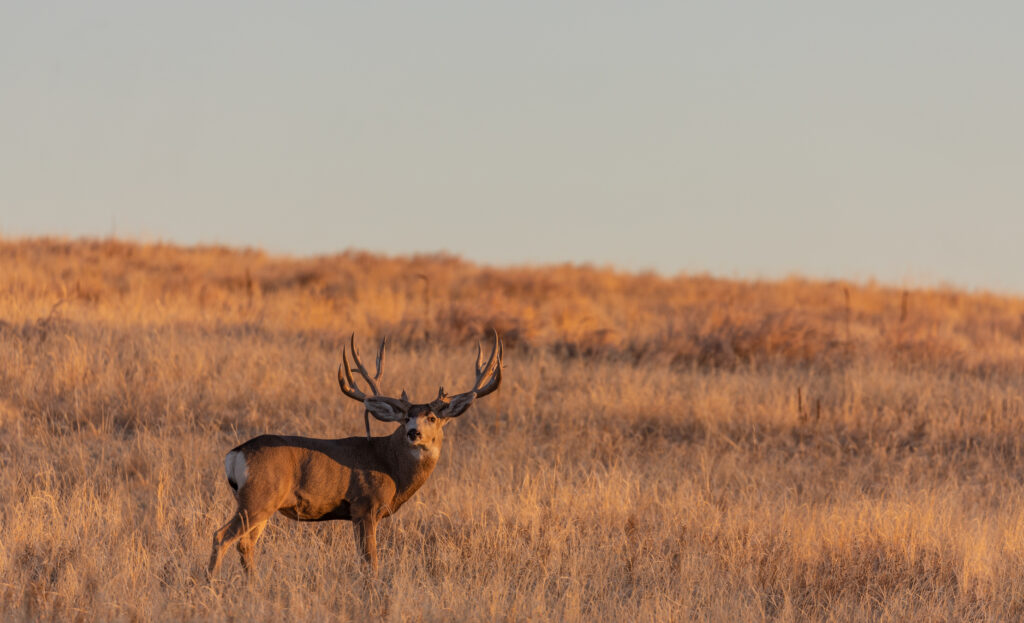Mule Deer are one of the most abundant species targeted by hunters in Colorado. People from across the continent show up in droves every year as mule deer season rolls around. In many respects, hunting mule deer in Colorado is much different than in the eastern US and Canada. The diversity in Colorado’s topography, cover types, and unpredictable weather patterns make successfully bagging and tagging this popular target species an exciting challenge. Luckily we have detailed some of the most important tactics that you can use to make your next mule deer hunt one to remember.
1. Preparing For Next Mule Deer Season
For most of us, hunting isn’t just a hobby that we partake in for a few months out of the year, it’s a lifestyle. As soon as deer season ends, we are counting down to opening day next year. The best thing you can do for yourself during the off-season is prepare yourself for the following year. This means actually preparing yourself, not just obsessing over where you are going to hang next season’s trophy buck.
Staying In Shape
Colorado has a vast amount of different terrain and cover types throughout the state. The eastern part of Colorado is pretty flat and agriculture-heavy. It closely resembles the landscape of many midwestern states. Western Colorado on the other hand is covered in mountains.
This makes navigating the area a much more technical endeavor, not to mention the altitude factor makes it harder to breathe if you are used to hunting closer to sea level or out of shape. You would be wise to work on your cardio in the off-season so that you aren’t huffing and puffing when it comes time to pull the trigger.
Target Practice
Shooting is one of those technical skills that isn’t quite like riding a bike. You aren’t ever going to forget how to shoot, but you certainly will get rusty over time. Mother Nature isn’t always cooperative when it comes to providing the ideal conditions for a clean kill, so you should be comfortable shooting in a variety of different scenarios as well as be able to adapt and roll with the punches in any given situation.
The majority of the shots you take in eastern Colorado are going to be on flat ground, without much deviation in the elevation. As you venture further west, these shots become fewer and farther apart. Get comfortable shooting from a higher elevation than your target and vice versa because chances are you will be faced with this predicament at some point. Gravity exerts more force on the trajectory of your shot when shooting uphill and downhill, meaning that your bullet will tend to hit higher than when shooting straight.
2. Getting The Lay Of The Land
Since there aren’t many constants when it comes to the topography of the state, mule deer hunting in Colorado takes more planning to perfectly execute. If you plan on doing any high-altitude hunting west of Interstate 25, you are definitely going to want to get acquainted with the area. Navigating this part of the state isn’t the same as it is in the midwestern US where most roads are laid out in a grid and every plot of land is rectangular.
Finding Mule Deer Hotspots
It’s always ideal to scout an area in person to give you the best lay of the land, but this isn’t always possible unless you live close to where you hunt. If you live out of state and have to fly in for mule deer season, take advantage of all the scouting technologies that are out there. Studying topo maps is great, but nowadays we have satellite imaging and apps like OnX that can give us a clearer picture of our favorite hunting spots from afar.
Getting to know the units that you plan on hunting will help save you from any unnecessary headaches when the time comes to bag ‘em and tag ‘em next year. Come prepared and you will never be caught off guard.
Western Colorado’s Mountains
This habitat is full of dense forests, open meadows, and a lot of steep, rocky terrain. Mule deer in these areas are adept at using the landscape to their advantage, concealing themselves among trees and scattered boulders. Hunters need to be patient and keep their eyes peeled in these zones because mulees will be harder to spot. They tend to blend in with the landscape very well, especially at a distance or in dense forest cover.
The Foothills
The foothills are the areas between the western mountains and the plains to the east. You can expect to find a variety of cover including woodlands, scrub oak patches, and open fields. These areas provide an ideal balance of food and cover for mule deer, more so than the high country and the plains.

These transition zones between the east and west are full of water sources, feeding areas, and travel corridors. This is perfect for hunters because they can position themselves near any of these areas that deer are drawn to and wait for the deer to approach.
The Plains Of Eastern Colorado
Eastern Colorado is predominantly made up of rolling hills, wide-open fields, and agricultural plots. Compared to the other two zones, spotting mule deer is much easier in the plains because of the lack of trees and topography. This is of course a double-edged sword though, as the deer can see you easier as well. Hunters will have to employ stalking their target as opposed to sitting and waiting for the deer to come to them. Wind direction also becomes even more of a critical factor in these areas.
3. Understanding Migration Patterns
Due to the variation in Colorado’s topography, it is paramount to understand how seasonal changes affect mule deer migration patterns. Generally, they prefer to hang out in the high country as bow season comes in, and they eventually migrate down to the plains as the year progresses.
Early Season Mule Deer Hangouts
Early-season mule deer hunting is great in western Colorado because the higher elevation means cooler temperatures from August to September. This means that both rifle and bow hunters can take a crack at the mulees while they are up high during the late summer and early fall.
Pre-Rut & Rutting Behavior
As hunting season progresses into the fall, the temperatures will drop, and mule deer will be migrating towards the plains where they prefer to winter. At the same time, the rut draws near and mule deer become more active and less cautious about their surroundings. This combination of circumstances in October and November makes bagging the big one that much easier.
Late Season Mule Deer Habitat
By the time December and January roll around, mule deer have reached the plains where they will spend the rest of the winter. As we mentioned earlier, this part of the state is mainly agriculture, grasslands, and seas of sagebrush. Once the snow starts to fall the deer become much less active than they were in the summer as they spend the majority of their time in close proximity to food sources and areas to bed down in.
4. Come Early, Stay Late
No matter where you hunt mule deer, the early bird always gets the worm. It’s common practice to be in place before the sunrises. This ensures that you are actively glassing and scanning for deer as they move, plus you won’t miss out on any potential targets because you are focused on navigating through the field. Because of Colorado’s diverse and sometimes technical terrain, you should plan for extra time to get out into the field and where you need to be so that you are ready to rock when the deer show up.
5. Colorado’s Weather Changes Quickly
The weather in Colorado is known to change at the drop of a hat, and it’s not uncommon to experience all four seasons in a single day. This is especially true in the high country where storms can sneak up on you and change the entire situation in an instant.
Monitoring Weather Forecasts & Plan Accordingly
No matter where you hunt, it’s always a good idea to be prepared and check the local weather forecast before heading out into the field. Colorado’s rapid changes in weather can catch you off guard, so it’s a good idea to pack some clothing for all conditions. If you are comfortable, your focus is on the deer and not on how hot, cold, or wet you may be at the time.
High-pressure systems after storms are known for bringing clear skies and colder temperatures. Mule deer take advantage of this newfound sunshine to warm up and get back to feeding. Predicting this gives you a better picture of where the deer will be and what they will be doing after a storm.
Weather & Leveraging Mule Deer To Your Advantage
Since we can’t control the weather, our next best bet is to learn how different weather events affect mule deer behavior. Warm sunny days in the field are always enjoyable when hunting for mule deer, but if you play your cards right a little inclement weather can actually be your friend.
Excessively cold and windy weather will make mule deer less active as they search for shelter from harsh conditions and wait out the storm. This should tell you that stalking dense timber and other areas that have protection from the wind will be the best bet. Snow can help you spot mule deer tracks more easily, leading you to the most popular food sources and watering holes in the area. It can also help muffle the sound of your movement, allowing you to creep in closer for a clean kill. Although it’s not quite as fun to spend all day out in the wet and cold, this type of weather can help corral the deer into smaller areas, making them easier to track and shoot.

Heavy downpours aren’t too common in Colorado, but light rainstorms in the summer and fall can actually cause mule deer to become more active. During a rainstorm both you and the deer have the advantage of being muffled as you move, making it a win-win scenario for sneaking up on that unsuspecting trophy buck.
6. Different Techniques For Different Landscapes
There isn’t a one-size-fits-all solution for hunting mule deer, especially not in Colorado. There are too many variables at play to guarantee that one hunting technique will always keep your freezer full. Adapting your technique to fit your surroundings and the weather will always give you the best chance of filling your tags.
Spot & Stalk
Spotting and stalking mule deer is always exhilarating, but it’s not always the best approach depending on where in Colorado you are hunting and the time of year. It’s easier to do this in the high country and foothills because you can use topography to your advantage when creeping in closer for the kill. Stalking is a bit tougher out east on the plains because you don’t have as much of anything to hide behind, especially after all of the crops have been harvested.
Tree Stands & Hunting Blinds
Due to the lack of trees, tree stands usually won’t do you much good in eastern Colorado, but they are extremely effective in the mountains as they give you an elevated viewpoint in dense forests.
Hunting blinds on the other hand are a lifesaver (for you, not the deer) for hunting out in the flatlands where cover is hard to come by. A well-placed blind and enough patience will pay off more often than not in the winter when the deer are out near the Nebraska and Kansas borders.
Final Thoughts
Mule deer hunting and Colorado go together like bread and butter. The vast differences in the landscape from the eastern plains to the mountains in the west not only make for some truly picturesque views, but they keep the sport challenging and exciting. Hunting in this part of the US takes a little more planning and practice than in other areas, but if big mule deer is what you seek then it is surely worth it.

